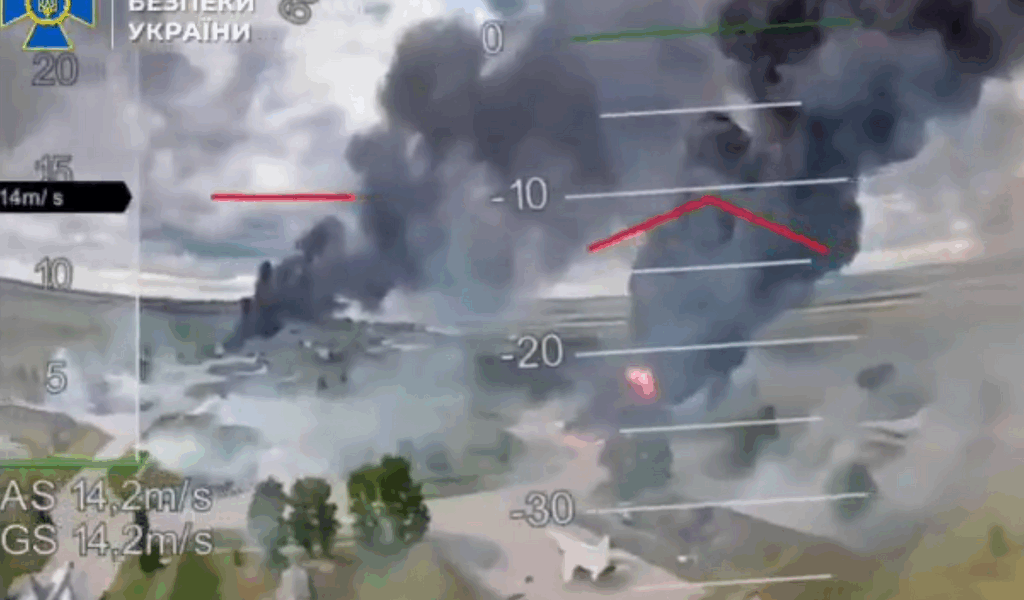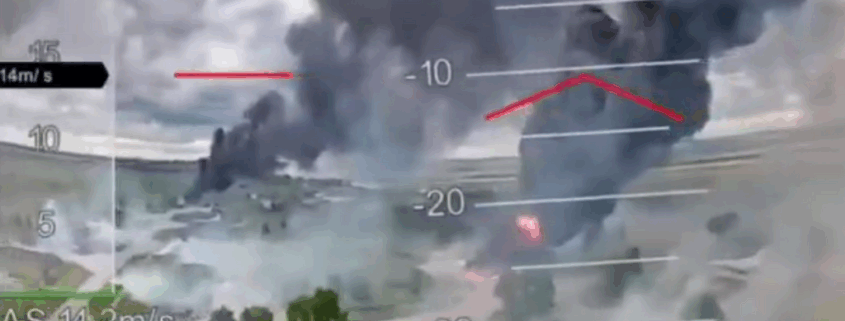For smuggled drones, China wouldn’t be as soft a target as Russia
Ukraine did it. Israel did it. Could Taiwan do it?
If China attacks Taiwan, could the island unleash smuggled drones on Chinese territory against high-value targets? Maybe, but China has long been aware of the potential of small, cheap drones, so it’s likely to be on guard. Also, China wouldn’t present Taiwan with a concentration of vulnerable, valuable equipment that Russia did for Ukraine on 1 June.
Taiwan may have much better way to use drones in the event of a Chinese attack.
The Ukrainian state security service achieved its remarkable attack by having long-haul trucks take loads of explosive first-person view (FPV) drones close to five Russian air bases—the farthest around 6,000 km from Ukraine.
Around 100 of the tiny FPVs, each weighing just a few kilograms, swarmed the bases. Relaying signals back to operators through Russia’s own cellular phone network, they homed in on Russian air force strategic bombers and other warplanes parked on the base’s tarmacs. When the smoke cleared, satellite imagery confirmed no fewer than 13 planes had been destroyed. The losses included 11 irreplaceable Tupolev Tu-22M and Tu-95 strategic bombers, about one-seventh of Russia’s active bombers.
Israeli forces also appreciate this new robotic reality. They smuggled small drones into Iran as part of their wider assault on Iran’s air defences and nuclear facilities starting on 13 June.
‘Using medium-sized drones smuggled or assembled in the country to attack military assets at the rear is significantly easier today’ than it was just a few years ago, said Ori Swed, a drone expert at Texas Tech University. ‘Drones are platforms and instruments; the way we use them is limited only by our imagination. Those could be hidden within cars, cargo or a designated carrier such as a small submarine.’
But a possible war across the Taiwan Strait would look very different compared to Ukraine’s defensive campaign against Russia and Israel’s offensive campaign against Iran. If the Taiwanese smuggled uncrewed aerial systems (UASs) into China for an attack on hard-to-replace assets—bombers or ships or long-range missiles—they would certainly carry it out ‘not in the exact manner’ as the Ukrainians and Israelis, Swed stressed.
‘Altogether, the combatants, their relative power, their force structures, the operational environment, their goals and targets, etcetera, are quite different,’ said Kerry Chavez, an assistant professor in the Department of Military and Strategic Studies at the US Air Force Academy in Colorado.
For one, the Chinese armed forces are ready where the Russia’s weren’t. ‘Unlike Russia, which had significant exposure to the small UAS phenomenon long before invading yet did not recognize its significance until Ukraine demonstrated it against its soldiers, China has long been thinking along these lines,’ Chavez said.
‘China is the largest producer of commercial drones and has intentionally incorporated drones from small to stealth into its arsenal,’ Chavez added. So it’s not likely to be caught unawares by such an attack.
The Chinese military ‘has also invested in a projectile-centric strategy—long-range ballistic and cruise missiles rather than airborne platform-based means of long-strike—because it’s cheaper to build, train and maintain and it’s easier to extend the range of missiles than that of unrefuelled aircraft.’
That makes the most important Chinese targets more difficult to strike. ‘Missiles are also more mobile than fixed bases necessary to support sustained air ops,’ Chavez said.
This doesn’t mean the Taiwanese wouldn’t try a smuggled aerial drone strike—and in their own way, striking at the Chinese targets that matter the most, and are the most vulnerable. They might launch small drones from fishing boats or commercial vessels and target China’s coastal facilities instead of driving drones hundreds of miles to hit air bases deeper inside China.
Time is a factor, of course. The Ukrainians spent 18 months planning its operation, called Spider Web. Long locked in a simmering conflict with the Iranian regime, the Israelis had even longer to lay the groundwork for their own drone operations inside Iran. Taiwan would have hours or days—not months—to win or lose its own war.
The imperative for the Taiwanese, as they stare down a potentially 1,000-ship Chinese invasion fleet, is to sink as many Chinese vessels as they can, as fast as they can, in the early hours of an attempted invasion.
Given the threat, a swarm of aerial drones attacking from inside China is far less useful to Taiwan than a swarm of drone vessels attacking from on or below the Taiwan Strait. ‘Taiwan might be more interested in leveraging unmanned underwater vehicles and smart underwater mines, both relatively small platforms, to attrit China’s invading armada,’ Chavez suggested.
According to Chavez, an ambush with drone submarines and smart mines might be preferable over ‘scheming a master plan to sneak small UAS onto the Chinese mainland.’ Recall that the Taiwanese navy has been experimenting with a robotic submarine testbed—the 30-metre, torpedo-tube-equipped Smart Dragon.
The Smart Dragon and any operational uncrewed submarine based on it might be bigger than would be appropriate for a true swarm of underwater drones. But the Smart Dragon’s mere existence is evidence Taiwanese forces are at least thinking about methods of striking at attacking Chinese forces—remotely, autonomously and asymmetrically.
If and when China attacks Taiwan, don’t expect a repeat of Ukraine’s Operation Spider Web. Do expect the Taiwanese to deploy deadly robots.
Lots of them. Probably from the sea.



